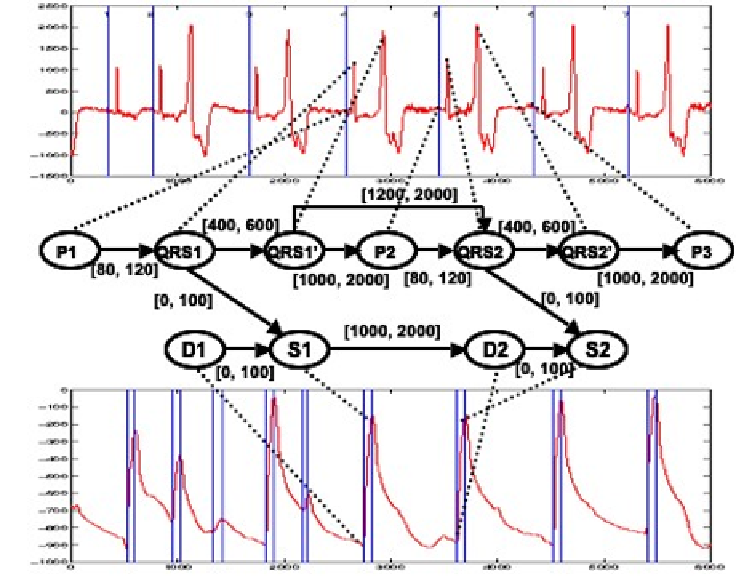Information Technology Reference
In-Depth Information
Fig. 4.
ECG (top) and pressure (bottom) signals of a bigeminy episode. The graph in the middle
shows a bigeminy chronicle model: P stands for a P wave event occurrence, QRS for a QRS
complex, D for a diastole, S for a systole. Quoted QRSs represent abnormal ones. Dotted lines
indicate possible event matches that satisfy the temporal constraints.
event. Many chronicle instances can be generated in such a way. One strength of CRS
is its ability to prune instances, as early as possible, whenever one temporal constraint
could not be satisfied by assessing whether an event occurence time has elapsed. This
makes it particularly adapted for applications where the detection of critical situations
is essential.
7
Adaptation
The architecture of Calicot shares many features with self adaptive systems [29]. Since
it is impossible to anticipate every situation and transition, decisions concerning pa-
rameter settings and the choice of tasks and algorithms to execute next are postponed to
runtime. The goal of this kind of software, is to monitor and control itself. In our case,
the system can be viewed as a meta-monitor: a monitoring system, the pilot, monitors a
monitoring system. The goal is to obtain the best performance by reconfiguring the sys-
tem operations, precisely by choosing alternate algorithms and chronicles sets. To each
processing module, algorithm or chronicle set, is associated a description which de-
scribes the way this module can be used. For example, to a signal processing algorithm

Search WWH ::

Custom Search